|
Loving Air Cargo A Power-Packed
Cancun Interlude
June 21st, Summer Solstice, at 06:17 the
Buck full moon was visible on the Eastern coast of North America. That
is when Clear View Americas 2024 was about to close its dance with the
venue last week in Cancun Mexico at the Hilton 19-21 June 2024. Precisely
at the same time in Turin, my hometown, a young tourist stopped an Iberia
plane before it took off to Madrid to stay in Turin and live with somebody
who had declared his or her love to him.
Love was in the air on this year’s
solstice, not only in Turin.
Together right here we shall discover in
a minute how far love for Air Cargo can reach. Perhaps less romantic than
stopping a plane on the tarmac, but far reaching indeed. In the end, loving
air cargo can be summarized as follows: we need sustainability through
technologies and investments today, tomorrow and forever, but you need
to read some of the details, if you wish to understand how you get there.
Webber Weaves Collaborative
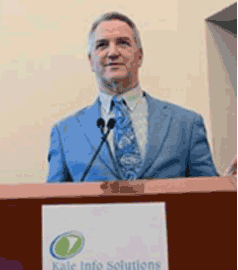 Session
1 discussed Collaborative Growth in the Air Cargo Industry – the
vital role of partnerships and airport leadership. One of our ‘usual
suspects’, Mike Webber, proficiently explained that one airport
only exceeded 4 M tons in the world: HKG, whilst MEM, PVG and ANC exceeded
3 M. MIA still holds 82% of the air cargo market share from the U.S. to
Latin America. It appeared to be a question of cultivating partnerships,
that is how the top four domestic gateways are MIA, LAX, ORD, JFK. Often
the problem is lack of communication in the beginning: airports must communicate
with the full logistics supply chain – airlines, cargo handlers,
regulators, forwarders/brokers, truckers, material vendors, etc. .
. . It must be a partnership to be successful. Session
1 discussed Collaborative Growth in the Air Cargo Industry – the
vital role of partnerships and airport leadership. One of our ‘usual
suspects’, Mike Webber, proficiently explained that one airport
only exceeded 4 M tons in the world: HKG, whilst MEM, PVG and ANC exceeded
3 M. MIA still holds 82% of the air cargo market share from the U.S. to
Latin America. It appeared to be a question of cultivating partnerships,
that is how the top four domestic gateways are MIA, LAX, ORD, JFK. Often
the problem is lack of communication in the beginning: airports must communicate
with the full logistics supply chain – airlines, cargo handlers,
regulators, forwarders/brokers, truckers, material vendors, etc. .
. . It must be a partnership to be successful.
Later this week we shall see how this point
is taken by AMS in the Netherlands. It could be instructive.
“Regarding airport expansion, RFPs
can take many years to come to fruition. When the municipality overseeing
the airport has a two or three-year term, this creates challenges and
the stakeholder have to then acclimate the new administration on needs,
concerns and solutions. There are a lot of industry groups that need to
work together before the award of the RFP. Regulatory policy changes affect
this too, take the USMCA, which is up for negotiation in the next couple
of years. Another factor implying a long and winding road is education,
often lacking in the cargo industry decision-making process.
Partnerships need everyone from the CEO
to the dock agent so that operational needs and requirements are in the
forefront of the final agreement. It is surprising how little the public
and private sector know what the other one does when these long-term developments
are being considered. The economic impact of e-commerce is dramatically
affecting how air cargo challenges and opportunities for partnerships
are evolving. How regulatory authorities like CPB Port Directors work
with the local stakeholders also play a large part in the partnerships
and success. For example, the CBP PD in ORD allows air cargo to be moved
from on-airport facilities to off-airport facilities without cancelling
its “in-fence” nature. The CBP PD in ATL denied handlers that
request with consequences.”
The attendees broke out into groups to further
discuss challenges and solutions. Let me suggest keeping an eye on Kale
Logistics Solutions for more information on this first and exceptional
session to our Clear View 2024 Americas event coverage in Cancun, MX.
Donna Mullins Regulates & Handles
Cargo
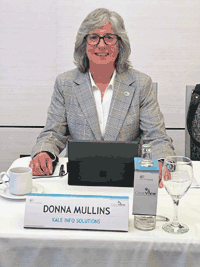 Getting
into Session 2: Assessing Cargo Handling Infrastructure and Regulatory
Developments: current status and future directions. Getting
into Session 2: Assessing Cargo Handling Infrastructure and Regulatory
Developments: current status and future directions.
Here Donna Mullins, another friend of the
FlyingTypers, was clear about the missed opportunities:
Many of the air cargo buildings are outdated.
Even those built in 1980, less than 50 years ago, are already outdated.
This is not surprising, considering that concrete looks quite like stone,
but does not last as long, and on top of this infrastructure needs maintenance
and updating. The 53-foot tractor-trailer did not become popular in the
U.S. until 1990 and many of the roads and truck aprons were not built
to adequately accommodate those types of vehicles.
eCommerce has played a big role in how cargo
buildings are now being developed (in 2023 the de minimis AWBs totalled
880 million and in 2024 we have reached 615 million already). eCommerce
rhymes with integrators in our minds, but did you know that the largest
ecommerce company is Amazon, followed by Walmart and The Home Depot. All
three of these companies are headquartered in the U.S. thus making the
U.S. airports think about how they need to develop for maximum cargo space
usage. For example, Amazon recently opened a 69-acre, $1.5 billion facility
at CVG airport.
Regulations and recommendations also drive
development, processes, and procedures: there are 49 U.S. government agencies
that have authority to hold, release, or seize cargo. Cargo buildings
must be able to house cargo and make it available for examination and
inspection. There are also agencies like DOA, FAA, DOT, FTA that affect
how the building is laid out, how and when the planes land, how trucks,
and workers get to the cargo facility, as well as how certain type of
cargo must be segregated and sorted while in the cargo facility. Agencies
like CBP, TSA, BIS, FDA, USDA and a host of others must have enough room
to screen and examine cargo. With the ending of ITS in October 2023, handlers
now have to accept certain types of cargo in a new manner and in some
cases are no longer accepting them.
Donna Mullins said: “The AfA and NCBFAA
took on an interest in air cargo delays and airport congestion to the
extent that a 40-member committee was created to identify deficiencies
in the air cargo supply chain causing cargo delays and airport congestion.
There was a survey within the U.S. air cargo community with over 300 replies:
the top five focused areas were, in order, Technology and Automation;
Service Standard; Airport Facilities and Infrastructure; Staffing and
Hours of Operation; Regulatory Agencies and Paperwork. With this information
we prepared a whitepaper (many thanks to the late Dan Muscatello) detailing
these focused areas and recommendations for improvement.
This paper was taken to ‘the hill’
where we were effective in getting a GAO study in the FAA reauthorization
bill for congress to take a deep-dive look into air cargo operations and
consider dedicated funding for the air cargo industry. Let’s see!”
With these words session two came to its
end, although infrastructure is really the never-ending story .
. .
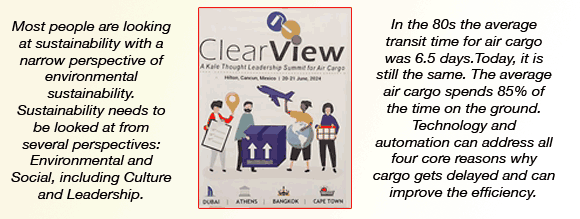 |
Embracing Operating With Digital
Innovation
 Session
3 was organized to debate Embracing Digital Transformation in Air Cargo
Operations – strategies for readiness and innovation. Session
3 was organized to debate Embracing Digital Transformation in Air Cargo
Operations – strategies for readiness and innovation.
In this session Amar More a founder of Kale
Logistics Solutions reflected on some of the deficiencies in air cargo:
specialized cargo, carbon footprint, facilities, locating the cargo, dealing
with the many players in the chain. Again it is a question of building
cooperation.
In the 80s the average transit time for
air cargo was 6.5 days. Today, it is still the same.
The average air cargo spends 85% of the
time on the ground.
Sometimes I wonder why the issues are in
fact the same across the board, when I was interviewing Joost van Doesburg
of AMS Schiphol I was discussing precisely the same issues and the same
topics and this is a strong signal that we need to learn from best practice
to acquire efficiency. If we love air cargo, we need to create an interconnected
network, nobody can work in isolation.
Collaboration is and will always be more
important than competition to achieve good results in network industries.
Let us go back to the third session. Four core
reasons why cargo gets delayed, and congestion starts:
1.
Most trucks arrive at the airport around
the same time for pick up or drop off;
2.
Paperwork
3.
Handlers largely ignore how many trucks are
coming and what they are bringing.
4.
Trucks come for cargo that is not ready for
pick-up.
It is not difficult to see that technology and
automation address all four of the factors and can improve the efficiency.
In terms of environment even worse: 1 gallon of fuel burns 10,000 grams
of CO2 released into the atmosphere, multiply that by 1,000 trucks a day
going to one terminal. That releases billions of grams of CO2, which technology
and automation can help reduce significantly. Paper can be reduced by
electronic data exchange. Only 24% of the paper in the air cargo process
is allegedly required on paper, but the industry still produces trillions
of pieces of paper unnecessarily. Using technology, we can eliminate the
need for paper, period. In addition, efficiency can be multiplied: the
same information appears on each document: these are all data bits that
can be entered or extracted once and shared among authorized trade partners.
The block chain concept has its own struggles, but EDI has been around
for years and is a secure method of exchanging data safely throughout
the supply chain. The e-AWB adoption is moving along, but nowhere near
where it needs to be. Reasons are different: some participants are small
and do not have sufficient capital, others are unsure about technology
and automation. We could ask ourselves what we need to drive automation
and whether One Record is the answer? Maybe not, as the initial concept
has changed. Compliance with security related regulation also play a part
in technology and innovation: PLACI, ACAS and other advanced information
requirements need technology and innovation. Supply chain resiliency and
cargo status visibility also drive digital transformation. In the end
it is only a question of mindset.
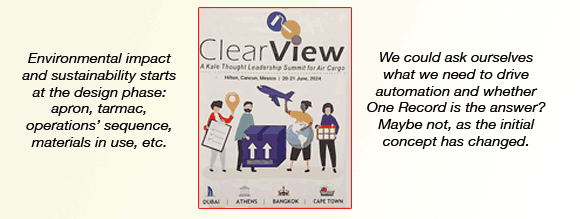 |
Time To Show The Love All Around
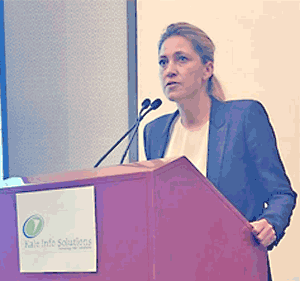 Can you love Air Cargo without loving the environment?
Maybe in another era, not today and this was pretty clear during a collaborative
Session 4 (Toward Sustainable Air Cargo Practices – a roadmap for
environmental responsibility), where Mathilde De Rocquigny (Director MEXICO
Air France-KLM Cargo in Mexico, CEO Mexico Cargo Handling at Kent Hindes,
Managing Director at Cushman & Wakefield, Aviation Practice Group
Lead) featured what apparently was an easy job, but . . . Mathilde
has also joined CargoAi in Singapore as chief commercial officer. “The
CargoAi team recruited me to build up a commercial structure and bring
airlines and freight forwarders together around this unique solution.”
This is a speaker with stamina and ambitions and she appears to
be at ease in her native France as well as in many other parts of the
world.
Can you love Air Cargo without loving the environment?
Maybe in another era, not today and this was pretty clear during a collaborative
Session 4 (Toward Sustainable Air Cargo Practices – a roadmap for
environmental responsibility), where Mathilde De Rocquigny (Director MEXICO
Air France-KLM Cargo in Mexico, CEO Mexico Cargo Handling at Kent Hindes,
Managing Director at Cushman & Wakefield, Aviation Practice Group
Lead) featured what apparently was an easy job, but . . . Mathilde
has also joined CargoAi in Singapore as chief commercial officer. “The
CargoAi team recruited me to build up a commercial structure and bring
airlines and freight forwarders together around this unique solution.”
This is a speaker with stamina and ambitions and she appears to
be at ease in her native France as well as in many other parts of the
world.
“CO2 emissions in the next 30 years are
expected to grow 20%, if we do not act responsibly with sustainable fuels,”
she said. Air France/KLM has more than 20% of new-generation aircraft
and 87,000 metric tons of SAF uplifted, i.e. 1.1% of the group total volume,
being the first SAF user worldwide, second time in row. By 2030 AF/KLM
expects to reduce fuel use by 30% with fleet renewal, SAF and operational
measures using technology. For Ms. De Rocquigny the roadmap is clear:
SAF can reduce the GHG emission up to 80% over the lifecycle compared
to fossil jet fuel, additionally airlines should consider lightweight
cargo nets and ULDS, carton beams, and other weight reduced and lightweight
equipment to help reduce fuel consumption and ultimately reduce CO2 emissions.
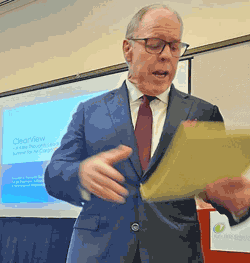 Kent Hindes affirmed Mathilde’s viewpoint and added, airlines should
continue to mitigate their environmental impact and sustainability starts
at the design phase: apron, tarmac, operations’ sequence, materials
in use, etc. For example, sustainable concrete produces 7% of CO2 emissions
– we read from other sources that according to the National Ready
Mixed Concrete Association, each pound of concrete releases 0.93 pounds
of carbon dioxide. Both the inside and outside of the building must be
considered in the design process in order to both serve the industry and
still be environmentally conscious. Sustainability is the responsibility
of every entity in the supply chain; from the airports to the end user,
we can all make changes, improvements, and take appropriate actions.
Kent Hindes affirmed Mathilde’s viewpoint and added, airlines should
continue to mitigate their environmental impact and sustainability starts
at the design phase: apron, tarmac, operations’ sequence, materials
in use, etc. For example, sustainable concrete produces 7% of CO2 emissions
– we read from other sources that according to the National Ready
Mixed Concrete Association, each pound of concrete releases 0.93 pounds
of carbon dioxide. Both the inside and outside of the building must be
considered in the design process in order to both serve the industry and
still be environmentally conscious. Sustainability is the responsibility
of every entity in the supply chain; from the airports to the end user,
we can all make changes, improvements, and take appropriate actions.
There was also an obvious list of items that
have an influence: what is green energy? Lithium is hardly green. True
green energy that does not have a residual negative effect on mother earth
is not there yet, but we must continue looking . . .
Infrastructure again: many airports in the U.S.
have older structures and therefore impede the tenant’s ability
to meet certain environmental requirements the airports have been charged
with. In parts of the world, newer, more energy efficient cargo terminals
are built. Awareness is growing in the U.S. among many of the GHA, as
example, WFS, which are taking the lead in building updated energy efficiency
facilities; that comes at a great cost and affects the profit margins.
The stakeholder community can help too by replacing, for example, single
use plastics. What about noise pollution? Environmental sustainability
can do with another layer of new ideas here, too. In Lima, Peru there
are investments in new environmentally friendly materials and technologies
(Smart Airports).
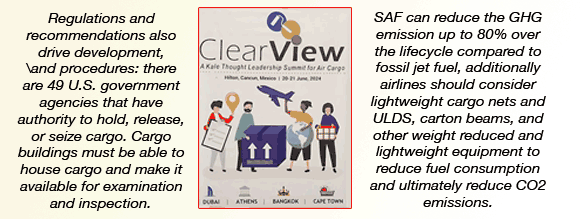 |
There was a shade of doubt in taking account
of the interplay between the necessary concerns to “save the world”
and how much politics can in fact contribute in practice. During Covid,
cargo airports were beneficial for the air cargo industry, but as quickly
as air cargo attained ‘hero’ status, it was forgotten when
passenger business returned to the air. On another tone, data is gold,
but information is platinum: do not confuse the two when making sustainability
decisions. Every individual has the responsibility to help in the quest
for sustainable air cargo. “We just have to do it!” was the
strong conclusion.
But there is also another way of looking at the
environment and we are happy to be able to give you some additional lines
on the side . . . This is one of the FlyingTypers
friends speaking and Amar’s take is sharp and distinctive, probably
more daring than Mathilde’s and Kent’s:
“Most people are looking at Sustainability
with a narrow perspective of environmental sustainability. However, Sustainability
needs to be looked at from the prism of Environmental, Social and Culture
and Leadership. TIACA is doing some very good work there.
In reading Ms. De Rocquigny’s statement
with regard to the cooperation between airlines and freight forwarders
enabled by Cargo Ai, I still have questions. From some points of view
things take time to change. Fifty years ago we understood that airlines
simply could not grasp the idea that cargo did not have legs. I wonder
personally, and I would be delighted to stand corrected, whether this
idea has in fact been absorbed today.
One point that was discussed in the fuel-focussed
environmental session was the carbon offsetting tools and the required
standardization. Kale mentioned that in its platform it will offer features
for the community to look at options for carbon offsets and that in my
view is important, in particular if we consider a block like the EU has
adopted and will implement fairly stringent legislation in this area.
One can argue that the EU has become a much less powerful contender in
the global trading milieu, but we are still speaking of something like
15% of international trade anyway.
Up Up & Away Elevating Air
Cargo Operations
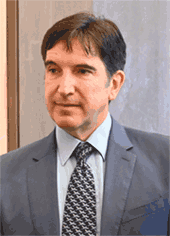 Lastly, at least for us, we shall give account
of session 5, which carried the high-flying title, Elevating Cargo Operations
– lessons learned and innovations post-pandemic and was developed
by a speaker who knows what he talking about: Eric Hartmann, Regional
Representative, Latin America, The International Air Cargo Association
(TIACA).
Lastly, at least for us, we shall give account
of session 5, which carried the high-flying title, Elevating Cargo Operations
– lessons learned and innovations post-pandemic and was developed
by a speaker who knows what he talking about: Eric Hartmann, Regional
Representative, Latin America, The International Air Cargo Association
(TIACA).
This was the session that more clearly and
urgently included the human factor. Costs, for starters: capacity in the
air and on the ground sees costs going up, whilst yields are higher, minimum
wages have increased. There are challenges in finding professional and
trained staff, there are issues in skills and motivation and salaries
may see an upward trend. Before the pandemic, e-commerce was only about
5% of global air cargo and the upward trend is unstoppable. De minims
in the U.S. was increased, which resulted in increased air cargo in the
ecommerce market, although in other parts of the world the picture is
more uncertain. This year, ecommerce is expected to represent more than
40% of all cargo traffic.
Transport disruptions such as Panama Canal, Red
Sea, container imbalance, accidents also contributed to increased air
cargo volumes and costs rose, puzzling the international trade industry.
Digital innovations are in place and available,
and acceptance affects capabilities. Regulators can help or hinder cargo
operations, but the air cargo industry needs the support of the authorities,
and sometimes “you have to change the wheel while the truck is moving
. . . ”
e-AWB has grown since 2020, but it still
needs to grow more and faster. Hong Kong was the first 100% e-AWB cargo
hub, can this teach lessons to others? Technologies
thrive where there is a “digital trust” landscape and there
are areas where more can be done in this direction. Unfortunately, the
lack of digitalization can even be considered a resource: for example,
in Chile, a paper Certificate of Origin realizes USD$200 in revenues.
If it is electronic, that revenue is not received by the government. Air
cargo, its supply and demand will continue to grow. Air cargo’s
speed to market cannot be replaced and technology will be more and more
relevant in the supply chain and customers’ demands.
Hartmann closed his contributions with TIACA’s
published report identifying 8 key objectives for Sustainable Air Cargo:
Environment:
1.
Decarbonize (by reducing truck waiting times,
aircraft turnaround times, saving paper, modernize fleet, use SAF etc)
2.
Eliminate Waste (reuse plastic if you have
to use plastic, reduce paper in air cargo, reduce wastage of fuel etc.)
3.
Protect BioDiversity (save trees, plant trees)
Social
4.
Support local communities and economies
5.
Improve lives and well-being (Noise reduction,
cleaner air)
Culture
& Leadership
6.
Improve efficiencies & profitability
(reduce economic waste of hours in waiting)
7.
Attract & retain employees (Train &
educate)
8.
Build and nurture partnerships (collaborate,
use community platforms)
In my view this is not in contradiction
with the previous speaker’s view, but it is somewhat more expanded
and comprehensive.
Let’s then take this opportunity to
close this long, but interesting report with the same parallel. We opened
this article with a line about loving air cargo, right? Love
needs to be reciprocated: unrequited love withers and in the end could
become hate and cruelty. We have too much of that already in the world
to have any interest in such a chilling development. Our air cargo lover
has spoken in the words of our speakers and said one and only one thing:
if you wish to reciprocate my love, you must make sure to show your love
and affection with appropriate, timely and well thought out investments
in physical and digital infrastructure.
Once the nest is ready for the future air
cargo community, the eggs will hatch.
Marco Sorgetti, Geoffrey Arend
|





